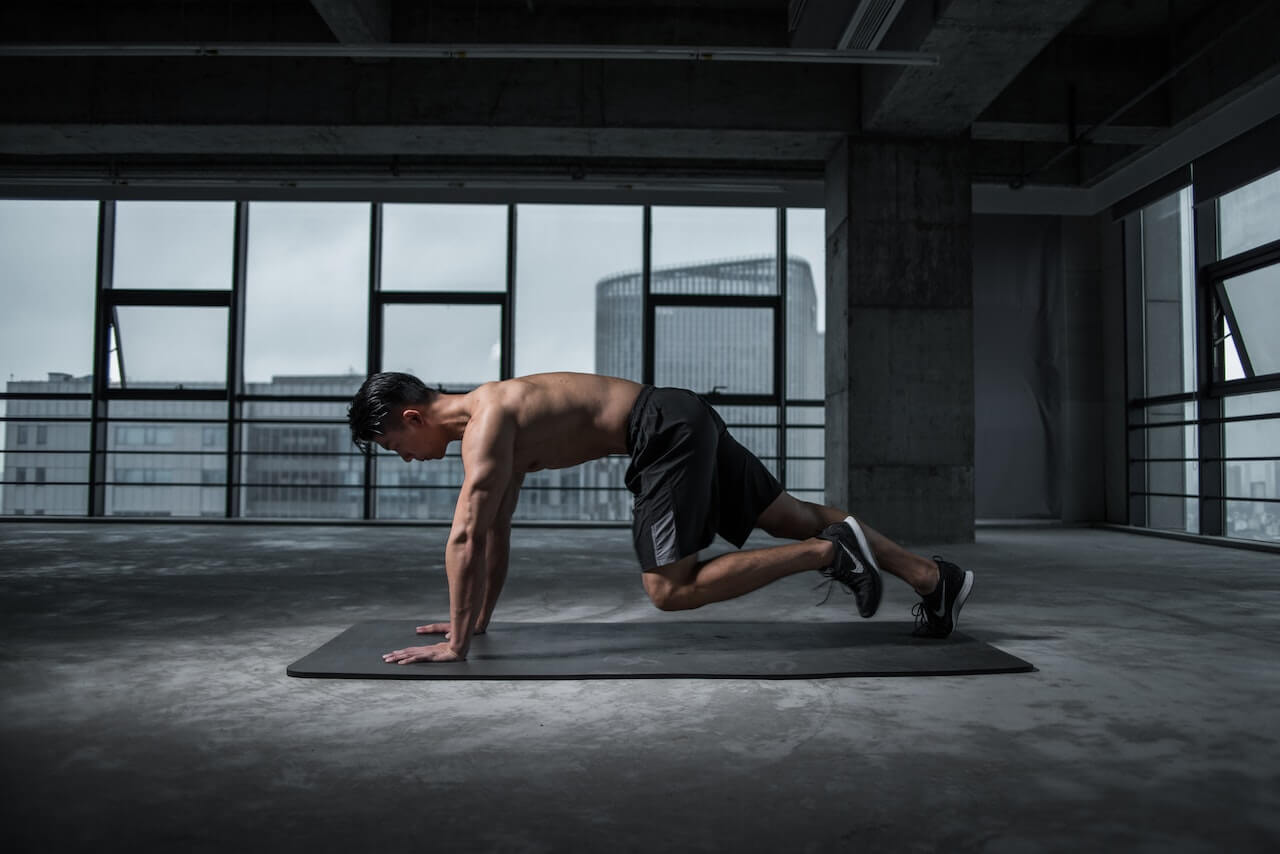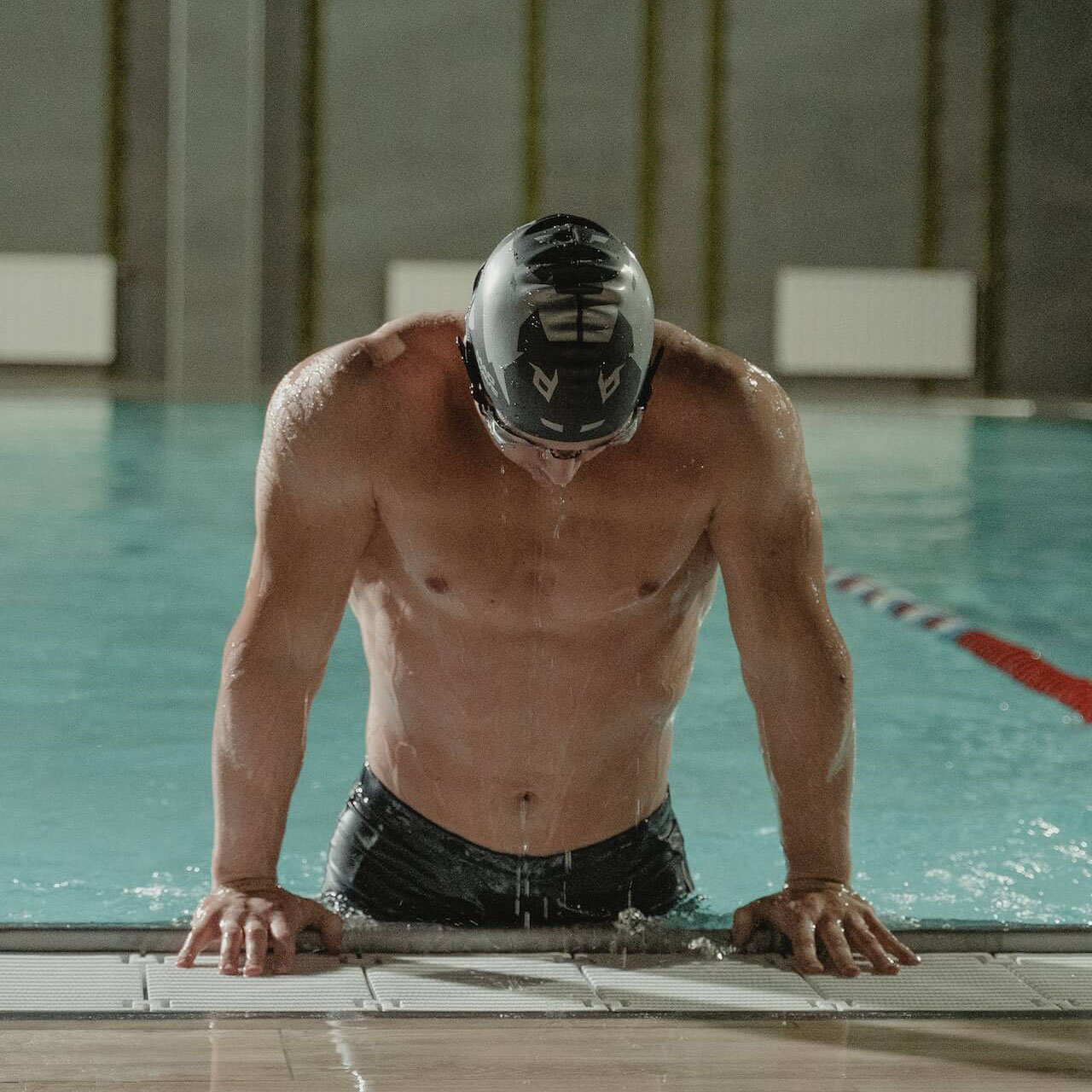A strong core plays a vital role in maintaining proper body position and executing powerful strokes in the water. Core exercises specifically designed for swimmers can not only enhance your performance but also help prevent injuries.

Having a strong core allows for better control, improved technique, and overall enhanced swimming efficiency. From exercises like the plank, Superman, Russian twist, leg lifts, and so on, each of the exercises covered in this article targets essential core muscles that provide stability and power during your swim sessions.
In this article, we’ll dive into the best core exercises that you can easily incorporate into your training routine without any equipment needed.
The Importance of a Strong Core for Swimming
Let’s start with a little anatomy and physiology. Your core, which includes muscles in your abdomen, back, and hips, serves as a powerful engine propelling you through the water. A strong core enables better stroke efficiency, ensuring every movement you make contributes to forward propulsion.
Moreover, your core is the linchpin for maintaining optimal body positioning in the water. A solid core helps keep your body streamlined, reducing drag and enabling smoother, faster swimming. It’s the secret to those effortless laps you see pro swimmers do!
Anatomy of the Core: More Than Just Abs

When you think of a swimmer’s physique, you might first envision chiseled abs. But your core is more than just a six-pack. It includes various muscles, each playing a unique role in swimming.
- Transversus Abdominis: These deep abdominal muscles provide stability and control, helping you maintain a streamlined position in the water.
- Obliques: These side muscles help with body rotation, a crucial component of efficient freestyle and backstroke swimming.
- Lower Back Muscles: Your lower back muscles aid in extending your body, making your stroke length longer and more powerful.
- Hip Flexors: These muscles help lift your legs toward your body during the recovery phase of the kick, enhancing your propulsion.
Understanding these muscles and their functions can help tailor your workouts to improve performance and prevent injuries.
Best Core Exercises for Swimmers
For each of the exercises below, with regards to sets and reps, I recommend picking 2-3 exercises, doing at least 2 sets per exercise of as many reps as you can until just shy of muscular failure (leaving one or two reps in the tank). There is no point prescribing an arbitrary number of repetitions; everyone is at a different level and so you should just do the best you can.
The Plank and Its Variations
The plank is an essential core exercise for swimmers as it targets the entire core. To perform a standard plank, balance on your forearms and toes with your body in a straight line. Keep your core engaged, and hold for 30 seconds to a minute.
For variations, try:
- Side planks: Balance on one forearm and the side of your foot, with your other arm extended towards the sky.
- One-arm planks: Balance on the balls of your feet and one forearm, with the other arm extended forward.
- Leg-lift planks: Add single-leg raises to the standard plank to increase the challenge.
Flutter Kicks and Dolphin Kicks
Flutter kicks target your lower abs and hip flexors. Lie down on your back, place your hands under your glutes, and lift your legs a few inches off the ground. Quickly kick your legs up and down, alternating feet.
Dolphin kicks engage your entire core, focusing on the lower back and glutes. Lie face-down on a bench or Swiss ball, with your feet hanging off the edge. Squeeze your glutes and lift your legs up, moving them in a dolphin-like motion.
Russian Twists and Sit-Ups
Incorporate Russian twists to work on your obliques and overall core strength. Sit on the ground, lean back slightly, and lift your feet off the floor. Hold a medicine ball or weight at your chest and twist your torso from side to side, tapping the ground by your hips.
For sit-ups, lie down with your knees bent and feet flat on the floor. Keeping your lower back pressed to the floor, use your core to lift your upper body towards your knees. Lower back down slowly.
Superman and Bridges
Superman exercises help to strengthen your lower back (which is part of your core, as mentioned above) and improve body position in the water. Lie face down with your arms and legs extended. Lift your arms, legs, and chest off the ground simultaneously, then lower back down.
Bridges work your glutes, hamstrings, and lower back for a stable kick. Lie on your back with knees bent and feet flat on the floor. Push through your heels to lift your hips up, squeezing your glutes at the top. Lower back down with control.
Stabilizer and Rotational Exercises
Stabilizer exercises like the Pallof Press target your deep core muscles. Stand perpendicular to a cable machine or resistance band, holding the handle at chest level. Press it straight out in front of you and resist the rotational force.
Rotational exercises, such as medicine ball throws, improve your power and torque. Stand with your feet shoulder-width apart and hold a medicine ball at chest level. Rotate your torso and toss the ball against a wall, catching it in a smooth motion and continuing the exercise.
Core Workout With No Equipment Needed
If you don’t have access to a gym, and you don’t even have access to equipment like a medicine ball or resistance bands, then don’t let that stop you from doing a core workout. You can still do many variations of core exercises with your bodyweight alone. Check out the video below to get inspired and follow along.
Incorporating Core Work into Swim Training
Balancing Pool and Dryland Sessions
It’s no secret that dryland training can strengthen your muscular strength and endurance, resulting in improvements in the pool. By incorporating core exercises into your workout routine, you’ll improve your balance and stability that you wouldn’t otherwise get from swimming alone.
Consider integrating core work into your dryland training sessions 2-3 times per week. Pick a handful of the exercises outlined above and do them at the end of your workout to cap it off.
Remember, you don’t need a gym or fancy equipment; you can do most of these exercises using just your bodyweight, but you have even more options if you have a medicine ball and resistance bands.
If you feel like your performance in the gym or the pool is suffering, or you are constantly tired, then it’s a sign that you are overtraining. Consider taking a day or two off, and re-evaluate how much training volume you’re doing in a week.
Monitoring Progress and Adjusting Workouts
Track your progress so that you can adjust your exercises based on your individual needs. This way, you can ensure that you’re maximizing your workout effectiveness and consistently challenging your core muscles.
Pay attention to your balance, coordination, and the ease with which you perform certain movements. As you start noticing improvements, consider increasing the intensity or the duration of your exercises.
Keep in mind that core workouts shouldn’t be limited to your dryland sessions; you can also incorporate specific exercises directly into your swim training.
For example:
- Focus on maintaining a streamlined position while swimming.
- Practice engaging your core muscles during flip turns and push-offs.
By effectively incorporating core workouts into your swim training, you’ll see noticeable improvements in your overall performance and technique. So go ahead and start implementing core exercises into your routine – your swimming results will speak for themselves.
Frequently Asked Questions
Should I do core training before or after swimming?
Whether you should do core training before or after swimming can depend on your specific goals and current physical condition. However, many trainers recommend doing core workouts after your swimming session. The reason is that swimming requires a significant amount of energy and focus. Performing core exercises beforehand might tire your muscles and impair your swimming performance. After swimming, your muscles are warmed up, making it an optimal time for targeted core training.
Should I do core training at the beginning or end of a workout?
Core training can be beneficial both at the beginning and end of a workout. At the start, it can serve as a great warm-up, activating your core muscles and preparing your body for the workout ahead. On the other hand, ending your workout with core exercises can help ensure you’re thoroughly working these muscles after your primary training is completed. Just remember not to exhaust your core before heavy lifting or complex movements that require significant core stability.
Can I train my core everyday?
While it might seem beneficial to train your core every day, remember that your muscles need time to recover and grow. Overtraining any muscle group, including the core, can lead to muscle fatigue, decreased performance, and increased risk of injury. A balanced approach is key: aim for core workouts 3-4 times per week, allowing for rest days in between to let your muscles recuperate.
Will doing core exercises flatten my stomach?
While core exercises can strengthen your abdominal muscles, they alone can’t guarantee a flat stomach. Achieving a flat stomach typically requires a combination of strength training (which includes core workouts), cardiovascular exercise, and a healthy diet to reduce body fat percentage. Remember, it’s not possible to spot-reduce fat—meaning, doing abdominal workouts won’t specifically burn belly fat. However, a balanced fitness routine can lead to overall fat loss, which will include your belly area.
Sources:

